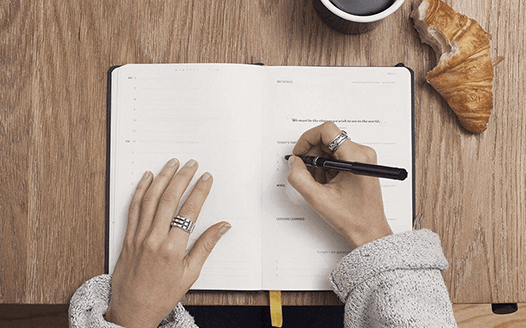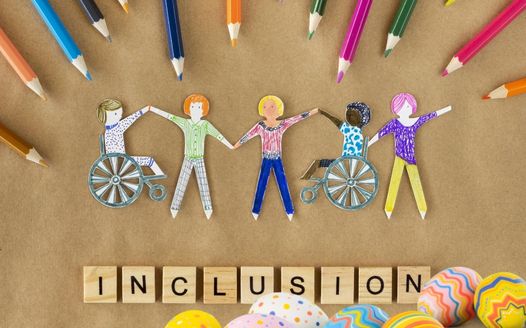Graphometry: How it develops and how to help a preschooler with it
For some, writing is as natural as breathing; for others, it’s difficult even in adulthood. The development of graphomotor skills begins from infancy. But there are milestones that are crucial for the successful mastery of writing and all further studies.
What to watch for and when to help the child? Can the kindergarten teacher handle everything? Do you know what a proper grip looks like and why it is important to practice graphomotor skills?

From birth, parents and other caregivers must monitor the child’s proper motor development. Any deficiencies may manifest themselves in graphomotor skills, which are a set of activities leading to written expression. It is, in simple terms, the movement of the hand that is carried out in order to make a mark, i.e. drawing, writing and doodling. Good graphomotor skills are essential for school success, so they should be practiced not only in the preschool years.
Milestones in graphomotor development
- The first deliberate attempts to leave a mark occur in children around 18-24 months. Before a child picks up a pencil for the first time, he or she is likely to “draw” something with a finger or spoon in the sauce. This is also why it is important that children are given the opportunity to feed themselves. Just as the child’s movements develop, the child’s grip on the pencil changes, following the historical development of the human being and his grip on tools. At first the child makes isolated movements, drawing only lines and holding the pencil in the palm of the hand with the thumb up or down.
- Between the 2nd and 3rd year, the movements become more coordinated and round and square shapes appear. The child holds the pencil in a handful grip that resembles holding a flint. It is advisable that the writing utensil is thick and short and therefore easy for the child to handle. Examples of such pens are wax pens, children’s markers and special crayons.
- By the age of 3-4.5 years, the child will be more fluent in drawing lines and will start to color. At this time, incorrect grips may already appear and need to be corrected to a pinch grip to prevent fixation.
 Young children around 3 years of age do best holding short and thick writing utensils such as wax pens. (Foto: Pixabay.com)
Young children around 3 years of age do best holding short and thick writing utensils such as wax pens. (Foto: Pixabay.com) The pinch grip is the most effective pencil grip in terms of hand movement.
The pinch grip is the most effective pencil grip in terms of hand movement.- Around the age of 4.5 – 5 years, when children like to draw ‘cephalopods’ and their creations are becoming recognizable, the pinch grip should be stabilized. Incorrect grips should be corrected so that by the time they start school the correct grip is fixed. The pre-school child should be able to draw the figure including details, which is checked by the child and adolescent practitioner at the 5 year check as part of the school maturity check.
Pinch grip – correct pencil grip
The pinch grip is the most natural and efficient grip for the pencil in terms of hand movements. It is essential for proper learning of writing and easier learning in general, so it is necessary to pay special attention to its fixation. The child should start school with a fixed grip, as there is no room for learning it in Grade 1 and move straight on to learning to write. Therefore, it is up to the parents and kindergarten teachers to ensure that it is mastered.
3 fingers are used – thumb, index and middle finger, the other fingers are loose on the paper, the palm is free. The thumb and forefinger are against each other with the pads of the fingers gripping the writing utensil, while the middle finger supports it from below. For young children, this hand positioning can be likened to a crib in which a pencil rocks. The middle finger is the crib, the index finger the pillow, and the thumb the comforter. The comforter is meant to gently surround but not press. This animation of the fingers and pencil also helps when correcting. Instead of saying to the child, “You’re holding it wrong.” We say, for example, “The pencil is falling out of the crib and the cushion is pushing.” This way the child doesn’t get the feeling of being clumsy and we can correct him more often.
 Incorrect grip – thumb and forefinger are not clasped in a pinch, thumb protrudes. (Foto: Pixabay.com)
Incorrect grip – thumb and forefinger are not clasped in a pinch, thumb protrudes. (Foto: Pixabay.com) Incorrect grip – too much pressure on the pencil, index finger breaks.
Incorrect grip – too much pressure on the pencil, index finger breaks.
Manifestations of graphomotor immaturity in preschool age
Immature graphomotor skills manifest themselves in everyday activities and are quite easy for a parent or kindergarten teacher to notice.
A child with immature graphomotor skills:
-
- does not seek out handicraft activities
- refuses to draw
- is less dexterous in self-care (dressing, zipping up, tying shoelaces)
- has a skeletal line of drawing, non-fluent lines
- produces a poorer drawing than his peers, which corresponds in form and content to that of a younger child
Practicing graphomotor skills
If you observe any of the above manifestations of immature graphomotor skills in your child, include more developmental activities.
Children can practice fine motor skills through, for example, cooking and manual work. Working with modelling or clay will strengthen the muscles in their hands. Playing a musical instrument has the same effect. Handling small objects such as stringing beads forces the child to coordinate the movement of the thumb and index finger and prepares him for pincer grasp. In fact, when manipulating small objects, the fingers form a pinch just like that needed to hold a pencil.
Children train their gross motor skills best when playing outdoors, so allow them to jump, run and climb as often as possible.
Preparing preschoolers for writing
Graphomotor skills are influenced by psychomotor development. If a parent or teacher is hesitant about whether a child’s graphomotor development is in order, he or she can visit a specialist to assess the condition and recommend specific graphomotor exercises. They can advise you at the educational and psychological counselling center, whose services are free and located in every region.
There are also private counselling centers specifically for graphomotor skills. If a child has poor graphomotor skills even at school age, he or she could struggle with poor letter learning, illegible handwriting and slow writing speed. If you are vigilant in preschool and follow recommendations and practice when appropriate, the start of school and learning to write will be much more relaxed for the child.
Source:
www.grafomotorika.eu
www.stabilo.com
www.msmt.cz
Foto: Pixabay.com
10. 4. 2022 | Lucie Hromádková














